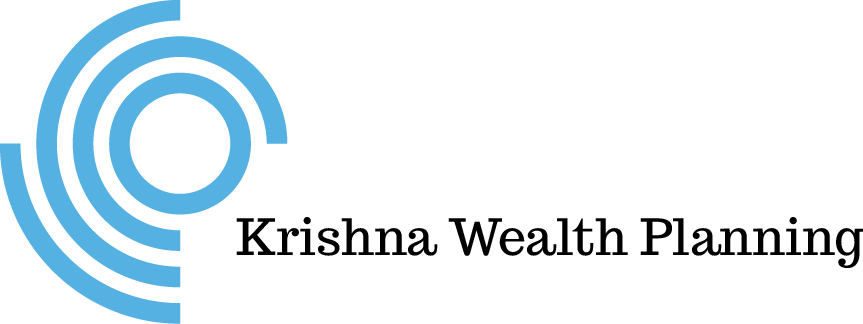7-Minute Read
Do you have a dormant or inactive 401k plan from a previous employer? If not, do you have an active plan with your current employer but anticipate leaving that employer soon? If one of these situations applies to you, this piece could serve as a useful reference. The good news is 401k plans are designed to be portable. You can leave them as is or take them with you. That flexibility is nice, but it also puts the onus on you to decide what to do. Here we look at the four options available for a dormant 401k plan and some of the nuanced considerations for choosing one path versus another.
Note: This piece refers to 401k plans as they are the most common type of qualified plan. But many of the concepts discussed apply to other types of plans such as 403b or profit-sharing plans.
Option One – Leave Assets in Your Previous Employer’s 401k Plan
If your dormant 401k plan is meeting your needs, doing nothing might be a viable solution. It is usually a good idea to at least review the Summary Plan Document (herein referred as SPD) to understand the quality and costs of the investment options available in your previous plan. Here are a few other considerations:
· If you still want to make contributions to the 401k, this option becomes less valid because a plan needs to be active to allow contributions. You might consider one of the options in the following sections instead.
· If you want professional investment management for your 401k, review your SPD or discuss with your plan provider. Some plans are structured to allow this, but the requirements and costs should be reviewed carefully. In most cases, you would need to choose Option Three for access to professional management.
· If you’re over the age of 55 (or 50 if in public service), you may be eligible for a “separation from service” distribution. This is taxable as ordinary income but not subject to a 10% penalty that would apply to distributions from an IRA before age 59 ½. If you need the income, this is one scenario where leaving the assets in the dormant 401k might make the most sense.
· If your plan includes company stock, Roth contributions or after-tax contributions, see Option Three as there may be special tax benefits to transferring assets outside the 401k.
Option Two – Move Assets to your Current Employer’s 401k Plan
If you are still working and your current employer offers a 401k plan, this path is worth exploring. Again, like Option One, review the SPD to understand the quality and costs of the investment options available in your current plan. Here are a few more considerations:
· Check whether your current 401k plan allows an incoming rollover from a previous plan. If not, this option becomes moot.
· If your old dormant 401k had an existing loan, it would need to be paid off before rolling over assets. Specifically, the balance of the loan must be repaid by the due date of your tax return for the year you left your employer. Otherwise, the unpaid balance will be treated as a taxable distribution and subject to a 10% penalty depending on your age and other circumstances.
· If you’d like the capability to borrow money from your 401k in the future, then moving assets into your current, active plan can make sense. Notably you cannot borrow money from an IRA (Option Three below). You also need to check if your current plan allows loans. Whether you should borrow from a 401k compared to your other borrowing alternatives is also an important decision, but beyond the scope of this piece.
· While not typical, hardship distributions are only available in active 401k plans. Income is taxable as ordinary income and may be subject to a 10% penalty.
Option Three – Move Assets to an IRA Rollover (and Possibly Additional Accounts)
Here are some considerations for moving a dormant 401k into your own IRA:
· Investment Choices – With an IRA, you most likely will have a broader array of investment choices available. 401k plans tend to have a limited “menu” of investments to pick from. Based on your perspective, this may be a pro or a con. Whatever investments you choose in an IRA may not be inherently better than the limited options you have in your dormant 401k.
· Convenience – Consolidation of dormant 401k plans into one IRA can make your ongoing tracking easier. Consolidation can help if you’ve had multiple employers (and plans) in the past. It can also help if you’re at or approaching required distribution age (typically age 72). Consolidating into one IRA can make the make the management of your ongoing distributions easier.
· Professional Management – Having assets in an IRA typically makes it feasible to hire an advisor for professional management. There can be numerous benefits to hiring a financial advisor. But firms, like Krishna Wealth Planning, provide disclosures such as the following:
o Fees for assets under management may be higher than fees for assets held away in a dormant 401k.
o For ongoing trades made in a managed IRA, you can possibly expect higher transaction costs than for trades made in a dormant 401k.
o Assets under professional management are not guaranteed to perform better than assets held in a dormant 401k.
· Tax Neutrality – When you initiate a direct rollover from a 401k into an IRA, you maintain the tax deferral and you are not subject to the 10% early withdrawal penalty. But once the money is in the IRA, note the following:
o If you’re over the age of 59 ½ and you need the income:
§ Distributions from an IRA will be taxed as ordinary income, but you will NOT be subject to a 10% early withdrawal penalty.
o If you’re under the age of 59 ½ and you need the income:
§ Distributions from an IRA will be taxed as ordinary income and you may be subject to a 10% penalty.
§ To avoid the penalty, you could consider Systematic Income 72(t) which requires substantially equal periodic payments.
· If your dormant 401k has Roth or after-tax contributions, it may be more tax efficient in the long run to roll over those positions to a Roth IRA. Subsequent growth of assets in a Roth IRA have the potential to be completely tax-free. This strategy is also discussed in Seven Ways to Maximize Your Tax-Free Assets.
· If your plan holds company stock, then you might want to consider another special tax benefit available. It’s called “Net Unrealized Appreciation” and it works like this at a high level:
o Roll over the company stock, particularly the shares that yield the most favorable tax consequences, into a separate taxable brokerage account.
o Roll over the non-company stock assets (if any) and stock shares that don’t yield favorable tax consequences into an IRA rollover.
o For the year of the rollover, pay income tax only on the cost basis of the company stock shares moved to the taxable account. (also subject to 10% penalty if under age 59 ½).
o If the company stock, now in the taxable account, is subsequently sold, you pay taxes at a more favorable long-term capital gains tax rate instead of ordinary income tax rate.
Option Four – Cash Out Assets from Your Dormant 401k
In the advisory world, this is sometimes called the “Never Do” option. That might be extreme and is not always true, but caution is required if you’re looking to simply distribute assets from your dormant 401k. Here are some the considerations for this final option:
· If your plan balance is small enough and you need the income, this may be an appropriate path to take. The tax impact may be manageable. In most cases, this option is not recommended.
· As referenced earlier in this piece, withdrawals from 401ks (and IRAs for that matter), are taxable as ordinary income. Withdrawals before age 59 ½ are subject to a 10% early withdrawal penalty.
· When a full distribution is requested on a 401k, there is typically a 20% automatic withholding for federal taxes.
· There are some exceptions to the 10% penalty for distributions taken before age 59 ½. The full list can be found at the IRS website. But here are some of the notable exceptions for 401k plans.
o Death – after the death of the 401k participant, so the impact is for beneficiaries of the plan
o Disability – total and permanent disability of the 401k participant
o Medical – certain unreimbursed medical expenses
o Divorce – subject to a qualified domestic relations order
o Equal Payments – series of substantially equal payments, also discussed earlier
o Separation from Service – if age 55 (age 50 for public service), also discussed earlier
Hopefully this piece has given you perspective on the due diligence needed before making a decision with your dormant 401k. If you have comments or questions on this piece, please drop me a line at: [email protected]
References
4. https://krishnawealth.com/seven-ways-to-maximize-your-tax-free-assets/
5. https://www.kitces.com/blog/net-unrealized-appreciation-irs-rules-nua-from-401k-and-esop-plans/
The information on this site is provided “AS IS” and without warranties of any kind either express or implied. To the fullest extent permissible pursuant to applicable laws, Krishna Wealth Planning LLC (referred to as “KWP”) disclaims all warranties, express or implied, including, but not limited to, implied warranties of merchantability, non-infringement, and suitability for a particular purpose.
KWP does not warrant that the information will be free from error. None of the information provided on this website is intended as investment, tax, accounting or legal advice, as an offer or solicitation of an offer to buy or sell, or as an endorsement of any company, security, fund, or other securities or non-securities offering. The information should not be relied upon for purposes of transacting securities or other investments. Your use of the information is at your sole risk. Under no circumstances shall KWP be liable for any direct, indirect, special or consequential damages that result from the use of, or the inability to use, the materials in this site, even if KWP or a KWP authorized representative has been advised of the possibility of such damages.
In no event shall KWP have any liability to you for damages, losses, and causes of action for accessing this site. Information on this website should not be considered a solicitation to buy, an offer to sell, or a recommendation of any security in any jurisdiction where such offer, solicitation, or recommendation would be unlawful or unauthorized.





